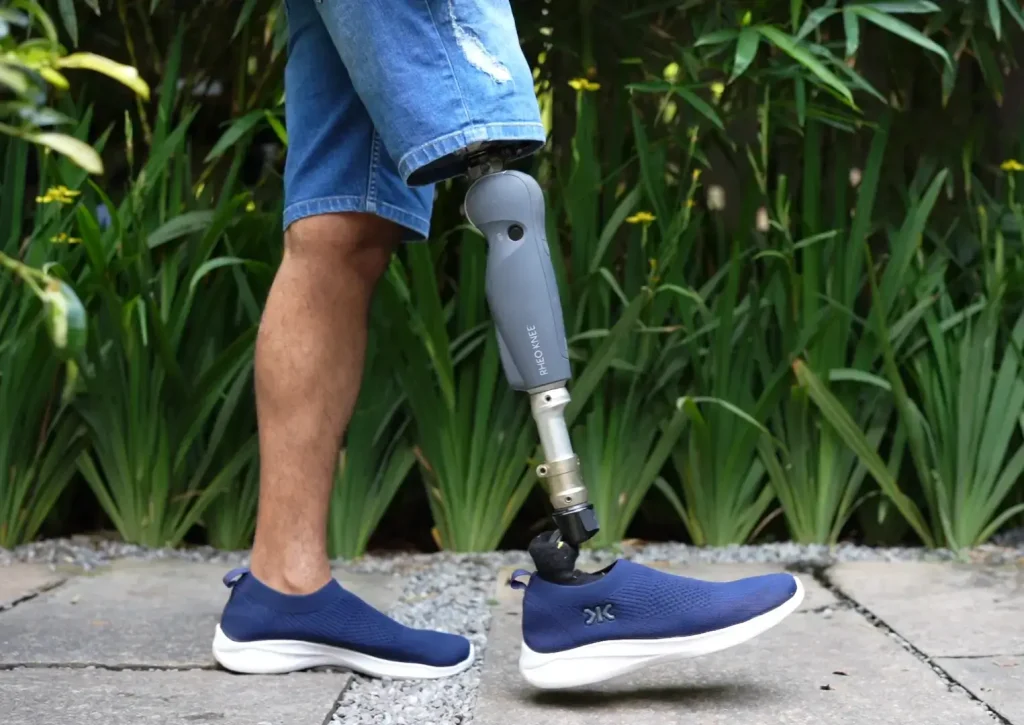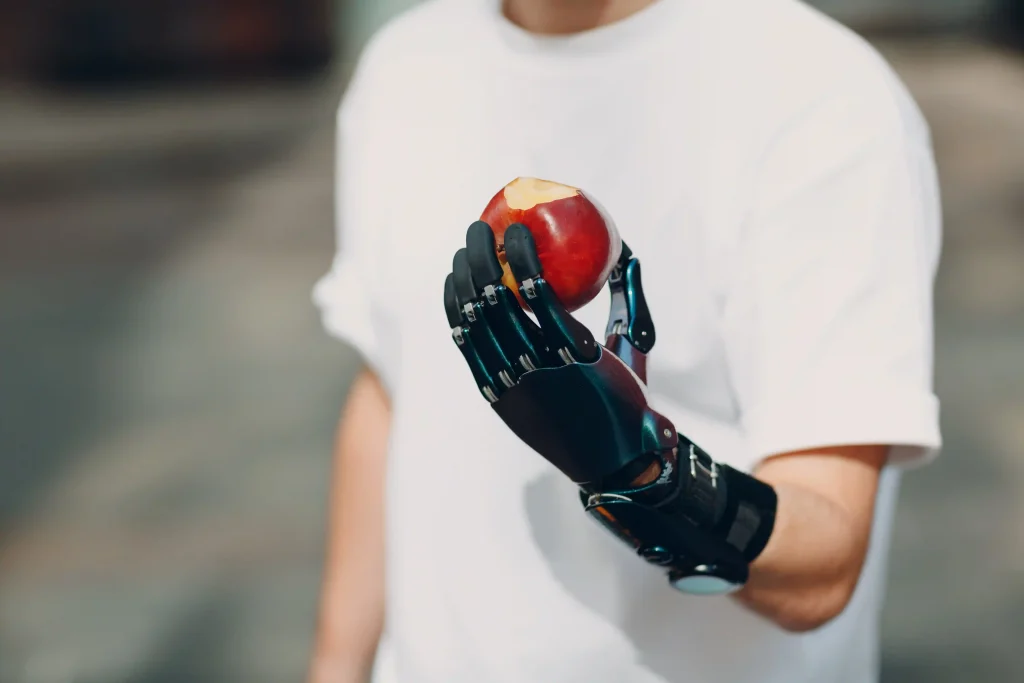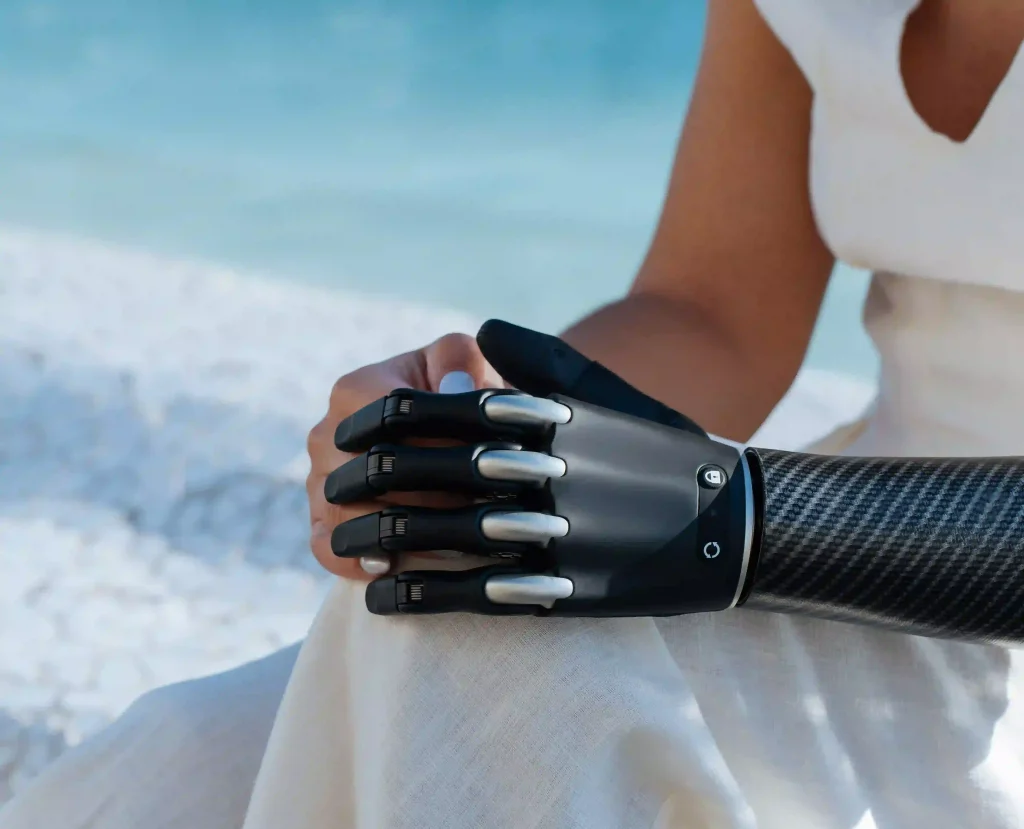
Losing an arm or hand can cripple you, but not anymore; bionic arms and bionic hands, the advanced prosthetic devices of the new age, are here to restore function, independence, and self-esteem. If you lose a limb following an illness, injury, or a congenital condition, you now have hope and real-life solutions.
In this blog, we’ll explore common questions, such as what a bionic arm is, how a bionic hand works, the cost of a bionic arm, and what makes advanced bionics the preferred solution, especially in India.
What Is a Bionic Arm?
A bionic arm is an artificial hand that can imitate the movement of the human arm. Electrical signals generated from the user’s muscles control it, offering greater functionality than traditional prosthetics. With a bionic arm, users can perform daily activities such as gripping, typing, or even shaking hands.
What Is Bionics?
Bionics combines biology and electronics to replicate natural functions of the human body. The term was introduced by Jack E. Steele in 1958, and today, it plays a key role in developing prosthetic technologies such as bionic arms, bionic hands, and robotic eyes.
By applying natural movement patterns to technology, bionics helps individuals regain independence through devices that feel intuitive and human-like.
How Does a Bionic Arm Work?
A bionic arm works by sensing electrical signals from the user’s muscles and performing accordingly. When the user flexes the muscles in their residual limb, the sensors built into the arm can detect these naturally occurring signals. These signals are then translated into smooth and proportional movements of the bionic hand. The bionic arm then allows the user to pick up objects, type or shake hands.
Components of a Bionic Hand:
- Myoelectric sensors: detect muscle contractions
- Microprocessors: interpret signals to decide movement
- Motors and actuators: power finger and wrist motions
- Advanced features: customizable grips, smartphone connectivity, sensory feedback
This technology allows users to grip objects, type, rotate the wrist, and even perform fine motor tasks such as buttoning a shirt.
Who Can Benefit from a Bionic Arm?
A bionic arm is suitable for:
- Amputees with limb loss above or below the elbow
- Children born with limb differences
- Accident survivors with upper-limb loss
- Patients with surgical or traumatic amputations
- Amputees who can still generate control signals
What Can a Bionic Arm Do?
A bionic arm provides hand and arm movement, allowing the user to feel confident. It copies the natural movements of a human hand and arm, enabling users to perform simple tasks:
- Open and close the hand
- Adjust grip strength for delicate or firm holds
- Hold utensils, pens, and tools
- Pick up small items like coins or keys
- Rotate the wrist naturally
- Type or use a smartphone
- Perform gestures or sign language
- Manage daily tasks such as dressing, cooking, and driving
How Much Does a Bionic Arm Cost in India?
bionic hand price in India usually depends on features, manufacturer/brands, customisation, and the materials used.
- Basic bionic arm (with mechanical hand/wrist/elbow): ₹2,00,000+
- Basic bionic arm (digital hand/wrist/elbow): ₹7,00,000+
- High-tech versions: ₹15,00,000+, could go up to 70,00,000+ (full range)
👉 Find the right bionic hand price in India for your needs. Book your free consultation now!
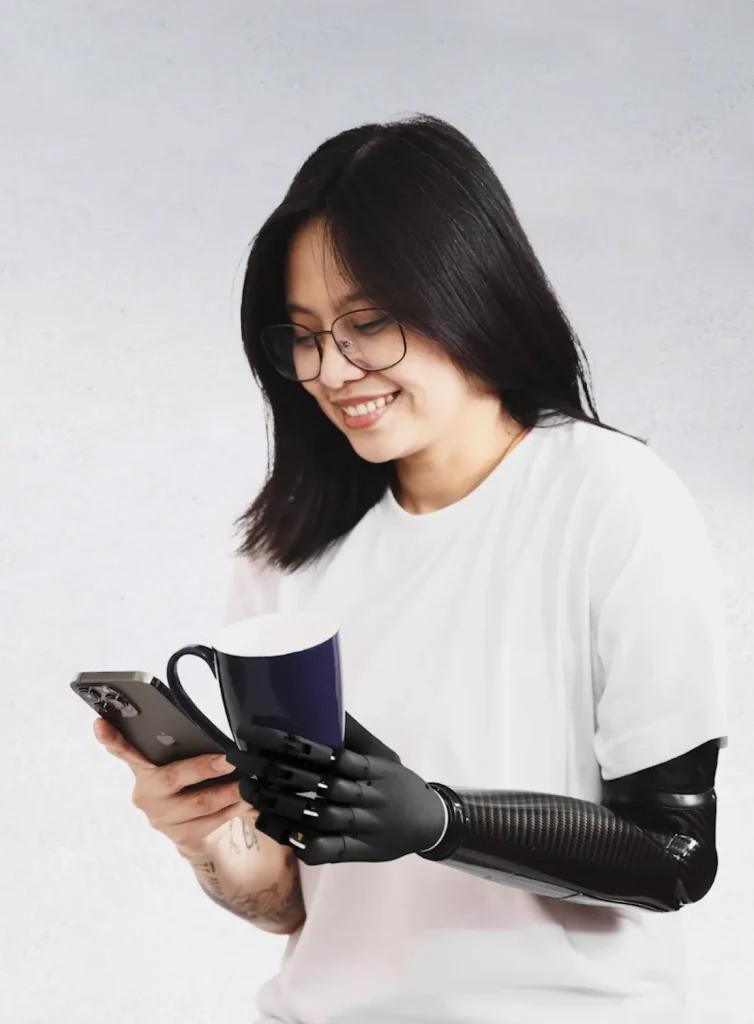
What Are the Popular Bionic Arms Available in India
1. i-Limb Quantum (by Össur)
Get more functionality with the i-Limb Quantum, Ossur’s multi-articulating myoelectric hand at KARE. Designed with advanced i-Mo gesture technology, this upper-limb prosthesis lets users switch between up to 36 grip patterns effortlessly using gestures, muscle signals, an app, or proximity.
Key Highlights:
- Five independently articulating fingers
- Rotating thumb for natural, versatile movements
- Speed Boost for 30% faster finger response.
- Vari-Grip™ for enhanced grip strength
- Auto-Grasp™ anti-drop safety feature
- Controlled via gesture, app, muscle, or proximity
- Compatible with Biosim™ and My i-Limb™ apps
- Available in four sizes: XS, S, M, L
- 5-year warranty with Touch Care
2. TASKA Hand
- Durable and real-world use
- Rainproof and water-resistant
- 23 grip options, including fine pinch and tool grip
- Flexible, robust design suitable for manual labour
- Controlled via myoelectric sensors or an app
Top Bionic Hands and Arms Available Worldwide: Key Features
1. Hero Arm (by Open Bionics)
- Lightweight and cost-effective 3D-printed bionic arm
- Functionality (up to 6 preset grips)
- Myoelectric sensors for intuitive control
- Custom superhero-themed covers for children and adults
- Rechargeable battery with a 12-hour lifespan
- Designed for transradial (below-elbow) amputees
2. Bebionic Hand (by Ottobock)
- 14 grip patterns for daily use
- Individual finger movement for natural motion
- Soft finger pads and auto grip for secure object handling
- Wireless programming via Bluetooth
- Ideal for delicate tasks like typing or holding utensils
3. LUKE Arm (by Mobius Bionics, developed with DARPA)
- High-level arm prosthesis with shoulder, elbow, wrist, and hand movement
- Intuitive control system (myoelectric, IMUs, or foot control)
- Multiple degrees of freedom for fine motor control
- Haptic feedback for pressure sensing
- Suitable for shoulder disarticulation and above-elbow amputees
4. Michelangelo Hand (by Ottobock)
- Natural hand shape and movement
- Rotating thumb that adjusts position for different grip types
- Multiple grip patterns, including lateral, precision, and power grip
- Soft fingertips for better tactile feedback
- Controlled via Myo Plus pattern recognition
- Bionic hands and arms are customised to suit user needs, light, everyday tasks, and are designed for complex functionality.
Advanced Bionics: Future of Prosthetic Technology
The world of advanced bionics is rapidly evolving. Here are some exciting innovations:
- AI-assisted grip adjustment
- Bluetooth-enabled control via smartphone
- 3D-printed prosthetics for a perfect fit
- Real-time touch and pressure feedback
- Bionic hands and arms are intuitive, lightweight, and personalised.
Frequently Asked Questions
1. Can I get a waterproof bionic hand?
Some models are water-resistant, but not completely waterproof, depending on the design.
2. How long does a bionic arm battery last?
Typically, 8–16 hours of use per charge, depending on usage.
3. Is the bionic arm heavy to wear?
Most modern designs are lightweight and ergonomically balanced.
4. Will I need training to use a bionic hand?
Yes, rehabilitation and practice are essential for the best results.
5. Can the bionic hand feel touch?
Some high-end models offer basic sensory feedback, such as vibration or pressure detection.
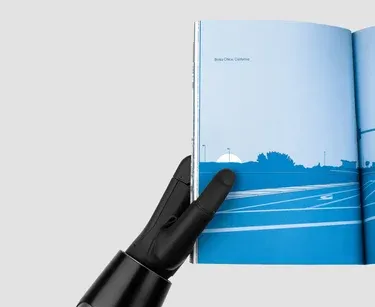
Final Thoughts
Bionic arms are new-age, powerful prosthetics that use bionics. These hi-tech arms enable users to regain movement in their arms and hands, regain independence, re-enter the workforce, pursue hobbies, and lead an active life again. If you are searching for bionic options, you must know how a bionic hand works, the cost of a bionic arm, and the benefits.
Best Bionic Arm in India: KARE Prosthetics & Orthotics
Finding the right bionic arm is about more than just getting a device, it’s about bringing back freedom in your everyday life. At KARE Prosthetics & Orthotics India, we make sure every fit is personal, comfortable, and truly works for you. Our team stands by you, not just during the fitting but in the journey that follows.
If you or your loved one is looking for the best bionic arm in India, talk to us today and take that step toward living life with confidence and independence again.




